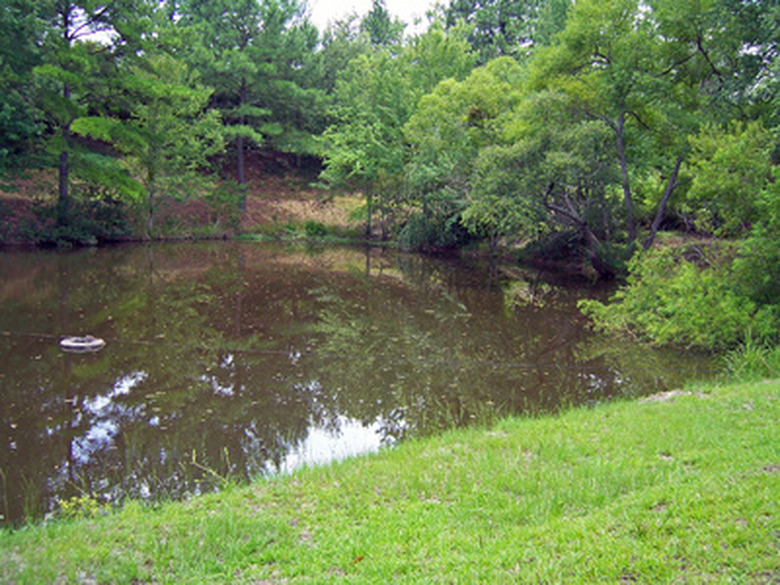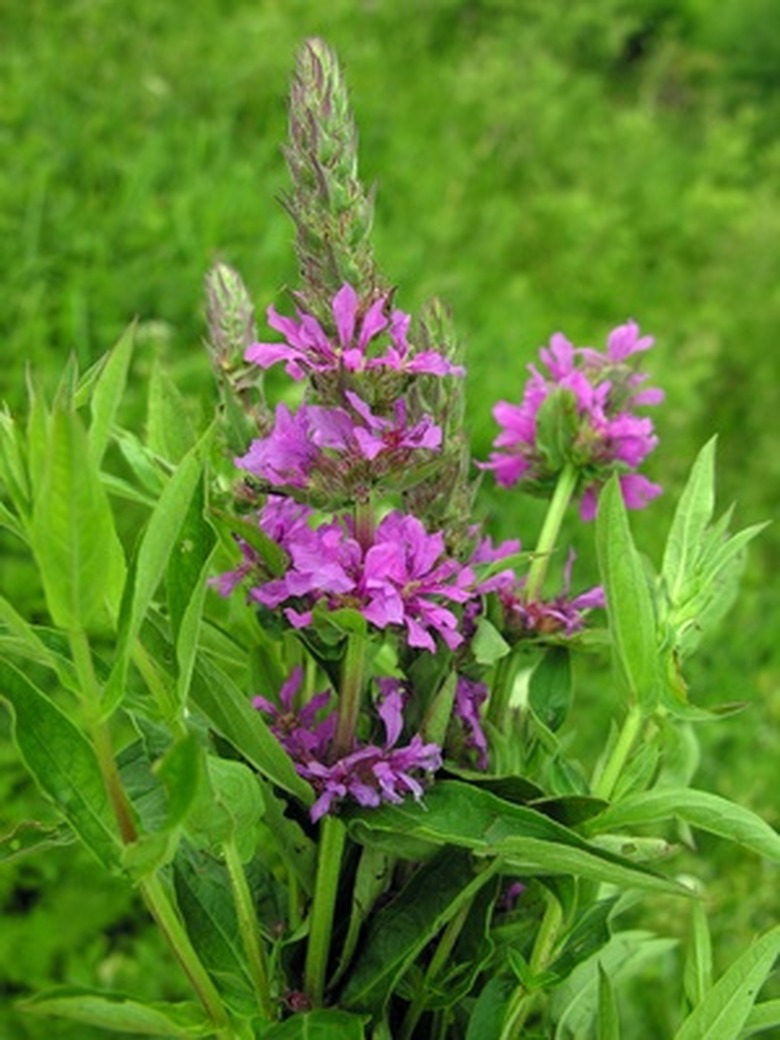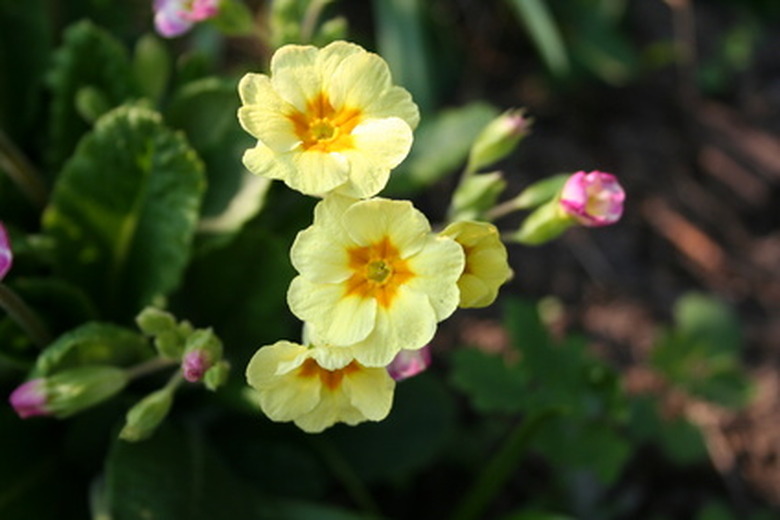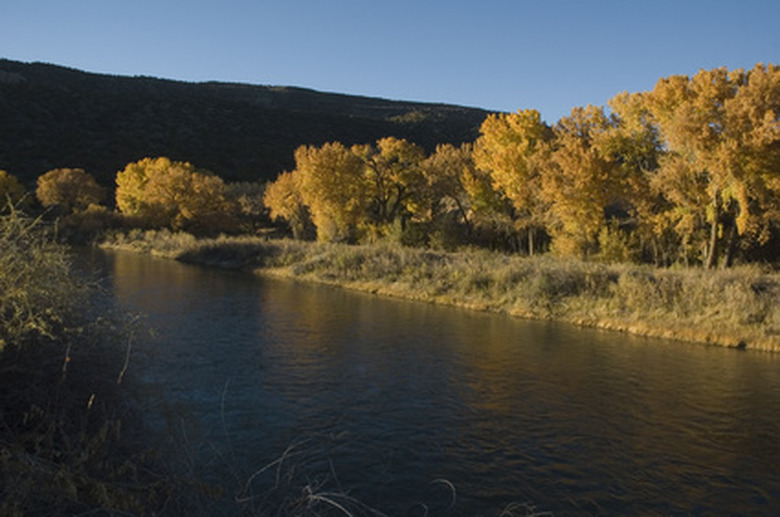Plants That Live Near Water
While waterlilies, lotus, duckweed or cattails may be seen growing in or on the edges of a lake or pond, many other plants tend to grow upland in soils that can still be fairly moist. These plants act as indicators of wet soils, or reveal areas where groundwater is close to the surface. Grow these plants in poorly raining or soggy areas in your regular garden or use them along freshwater bodies just a few feet from the shore.
Cardinal Flower
Native to North America, this perennial wildflower grows from a rhizome root and forms an upright clump of leaves that range in color from medium green to bronze-red. In late summer, this sun-loving plant displays upright spikes of tubular flowers that are intensely and vividly red. Cardinal flower (Lobelia cardinalis) grows about 3 feet tall.
Loosestrife
Purple loosestrife (Lythrum salicaria) is considered a noxious wetland perennial weed in much of the United States and Canada. This native of Eurasia grows 4 feet tall with stiff, upright stems and fuzzy leaves. From late summer to fall's frost, it displays bright, alluring flower spikes of violet-red to violet-pink that attract butterflies and bees.
- While waterlilies, lotus, duckweed or cattails may be seen growing in or on the edges of a lake or pond, many other plants tend to grow upland in soils that can still be fairly moist.
- From late summer to fall's frost, it displays bright, alluring flower spikes of violet-red to violet-pink that attract butterflies and bees.
Primrose
In late spring to early summer, many species of primroses produce upright stems with candelabra-like flowers. Many of the species native to eastern Asia naturally grow alongside forest streams in moist to wet soils, and grow 1 to 2 feet tall. Seeds are scattered after the blooming season so new plants germinate downstream. Some species of primroses include: Primula alpicola, Primula bulleyana, Primula rosea, Primula pulverulenta, Primula prolifera and Primula japonica.
Cypress
Two North American species of deciduous conifer trees often grow in wetlands, either in submerged soils or just above the water line. Bald cypress (Taxodium distichum) and pond cypress (Taxodium ascendens) both can slowly grow to heights of 60 feet or more.
Cottonwood
Across the prairies of the American Midwest the cottonwood tree (Populus deltoides) escaped being damaged by fire because it grows in the river ravines on the wet soil banks. When pioneers traveled west, they would look for cottonwood trees on the horizon, indicating that a stream, pond or lake was near. Cottonwood trees are long-lived and reach mature heights of 60 to 100 feet.
- In late spring to early summer, many species of primroses produce upright stems with candelabra-like flowers.
- Bald cypress (Taxodium distichum) and pond cypress (Taxodium ascendens) both can slowly grow to heights of 60 feet or more.
References
- "The Practical Rock and Water Garden"; Peter Robinson; 2002
- Great Plains Nature Center: Eastern Cottonwood




